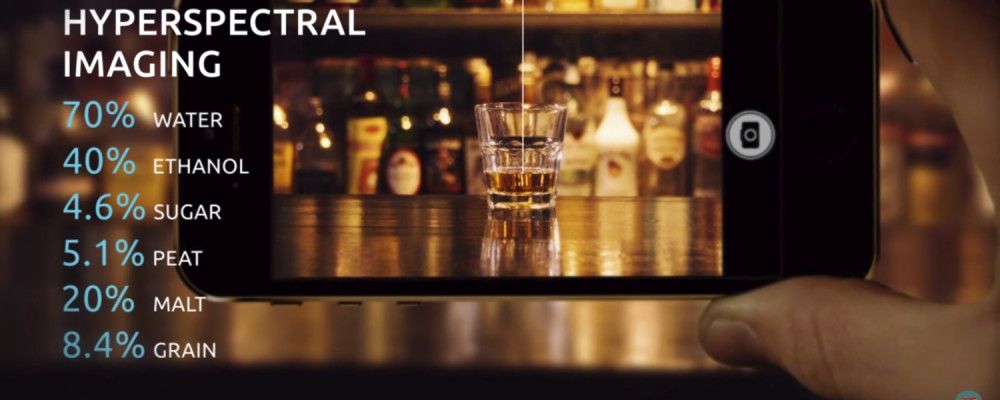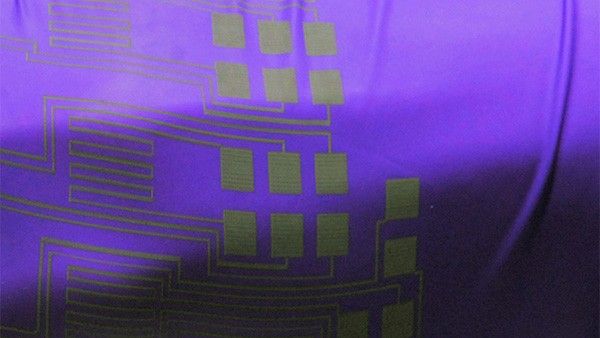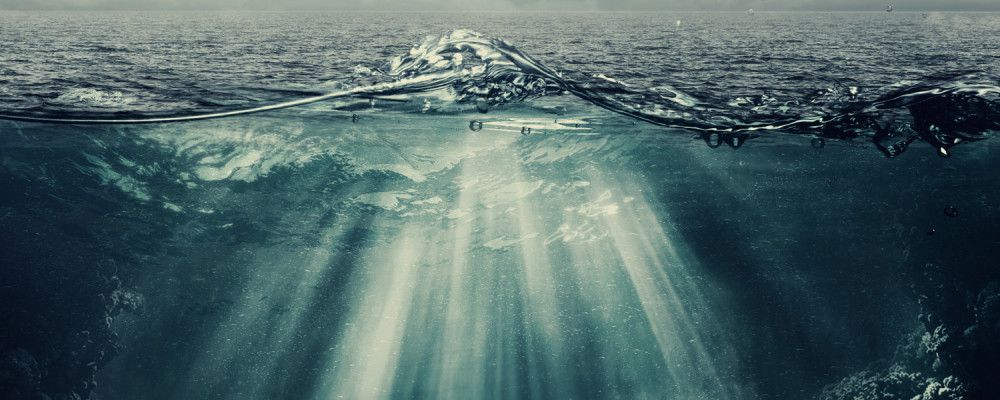Angela Watercutter - Wired
As expected, writer/director J.J. Abrams didn’t show up empty-handed to Star Wars Celebration—and not just because he sent pizza to everyone waiting in line in Anaheim. He also came with a new teaser for Star Wars: The Force Awakens. Read more
Get the latest international news and world events from around the world.
Game-Changing Technologies
Game-changing technologies can be a waste of money or a competitive advantage. It depends on the technology and the organization.
It seems like the term “game-changing” gets tossed around a lot lately. This is particularly true with respect to new technologies. But what does the term mean, what are the implications, and how can you measure it?
With regarding to what it means, I like the MacMillan dictionary definition for game-changing. It is defined as “Completely changing the way that something is done, thought about, or made.” The reason I like this definition is it captures the transformational nature of what springs to mind when I hear the term game-changing. This should be just what it says. Not just a whole new ball game, but a whole new type of game entirely.
Every industry is unique. What is a game-changer for one, might only be a minor disruption or improvement for another. For example, the internal combustion engine was a game-changer for the transportation industry. It was important, though less of a game-changer for the asphalt industry due to secondary effect of increased demand for paved roads.
Just as every industry is unique, so is every organization. In order to prosper in a dynamic environment, an organization must be able to evaluate how a particular technology will affect its strategic goals, as well as its current operations. For this to happen, an organization’s leadership must have a clear understanding of itself and the environment in which it is operating. While this seems obvious, for large complex organizations, it may not be as easy as it sounds.
In addition to organizational awareness, leadership must have the inclination and ability to run scenarios of how it the organization be affected by the candidate game-changer. These scenarios provides the ability to peek a little into the future, and enables leadership to examine different aspects of the potential game-changer’s immediate and secondary impacts.
Now there are a lot of potential game-changers out there, and it is probably not possible to run a full evaluation on all of them. Here is where an initial screening comes in useful. An initial screen might ask is it realistic, actionable, and scalable? Realistic means does it appear to be feasible from a technical and financial standpoint? Actionable means does this seem like something that can actually be produced? Scalable means will the infrastructure support rapid adoption? If a potentially transformational technology passes this initial screening, then its impact on the organization should be thoroughly evaluated.
Let’s run an example with augmented reality as the technology and a space launch services company. Despite the (temporary?) demise of Google Glass, augmented reality certainly seems to have the potential to be transformational. It literally changes how we can look at the world! Is it realistic? I would say yes, the technology is almost there, as evidenced by Google Glass and Microsoft HoloLens. Is it actionable? Again, yes. Google Glass was indeed produced. Is it scalable? The infrastructure seems available to support widespread adoption, but the market readiness is a bit of an issue. So yes, but perhaps with qualifications.
With the initial screening done, let’s look at the organizational impact. A space launch company’s leadership knows that due to the unforgiving nature of spaceflight, reliability has to be high. They also know that they need to keep costs low in order to be competitive. Inspection of parts and assembly is expensive but necessary in order to maintain high reliability. With this abbreviated information as the organizational background, it’s time to look at scenarios. This is the “What if?” part of the process. Taking into account the known process areas of the company and the known and projected capabilities of the technology in question, ask “what would happen if we applied this technology?” Don’t forget to try to look for second order effects as well.
One obvious scenario for the space launch company would be to examine what if augmented reality was used in the inspection and verification process? One could imagine an assembly worker equipped with augmented reality glasses seeing the supply chain history of every part that is being worked on. Perhaps getting artificial intelligence expert guidance during assembly. The immediate effect would be reduced inspection time which equates to cost savings and increased reliability. A second order effect could be greater market share due to a better competitive advantage.
The bottom line is this hypothetical example is that for the space launch company, augmented reality stands a good chance of greatly improving how it does business. It would be a game-changer in at least one area of operations, but wouldn’t completely re-write all the rules.
As the company runs additional scenarios and visualizes the potential, it could determine whether or not this technology is something they want to just wait and see, or be an early adopter, or perhaps directly invest in to bring it along a little bit faster.
The key to all of this is that organizations have to be vigilant in knowing what new technologies and capabilities are on the horizon, and proactive in evaluating how they will be affected by them. If something can be done, it will be done, and if one organization doesn’t use it to create a competitive advantage, rest assured its competitors will.
New York Firm Opens Business for Bitcoin Trading
By Sarah Jenn — NewsBTCIn a step closer towards the institutionalization of bitcoin trading, a New York firm announced that it is expanding its operations to include trading in blocks of bitcoin. Genesis Trading, a division of SecondMarket, says that it is currently the only licensed broker-dealer that offers this service.
Genesis is now specializing its operations to focus on bitcoin trading with its own team of traders and support staff. According to its Chief Executive Brendan O’Connor, their plan is to generate business from the hedge funds and private investors who have shown an interest in the cryptocurrency. Read more

Discover the Chemical Composition of Everyday Stuff…With a Smartphone Camera
By Jason Dorrier — SingularityHub
Our smartphones can do a lot—compute, pin down our location, sense motion and orientation, send and receive wireless signals, take photographs and video. What if you could also learn exactly what chemical components were present in any object? A new invention out of Israel aims to enable just that.
“The tricorder is no longer science fiction,” a recent Tel Aviv University (TAU) article declared. While a number devices in recent years have inspired similar comparisons, maybe this one is a little closer. Read more

How exactly does it feel when a black hole kills you?
As you fall feet first across an event horizon—the point where nothing can escape the black hole’s gravitational pull—you don’t feel anything change. But eventually, gravity is so much stronger at your feet than your head that you’re stretched apart, like Play-Doh, until you snap. Or at least, that’s the picture physicists drew after Einstein proposed his theory of general relativity in 1915. In the past few years, new possibilities for your untimely end have emerged.
The thought experiments attempt to resolve a paradox that physicist Stephen Hawking outlined in the 1970s. He showed that in their current forms, the two major pillars of physics—quantum mechanics and general relativity—can’t both be true near a black hole. General relativity governs how very massive objects work, while quantum mechanics governs how very tiny objects work. In most of the universe, physicists can choose which set of rules to apply—general relativity for a galaxy cluster, quantum mechanics for a particle accelerator—but a black hole is both very massive and very small. Read more

In The Future, Spider Silk May Help Grow Your Replacement Heart
— Gizmodo
There’s been a lot of talk lately about how spider silk is this crazy wonder material that may soon find its way into everything from electronics to ultra-strong fabrics. Now, there’s another reason to be excited about spider silk: doctors might one day use the stuff to grow you a new heart.
Growing new organs and tissues outside the body is the bleeding edge of biomedical research. Just imagine: if doctors could grow replacement hearts or kidneys from a patient’s own stem cells, that patient would no longer have to face the agonizing prospect of waiting to find a suitable donor. The risk of organ rejection would become nil. But there’s a lot of R&D to be done before we get there. One initial challenge has been finding a scaffold material to grow organ tissues on—something that’s non-toxic, will not impede cell growth, and will not, itself, be rejected by the body. That, it turns out, is a pretty tall order. Read more

Nanoparticle liquid-metal ink allows standard inkjet printers to create flexible circuits
Researchers at Purdue University have shown how standard inkjet-printers can be employed to produce flexible electronic circuits from liquid-metal nanoparticle inks. This simple printing solution promises faster, cheaper, and easier production of stretchable, bendable electronics for clothing, soft robotics, and wearable devices. Read More
SpaceX’s Success
I read all the news about SpaceX’s Falcon 9 latest “failure” to land on an autonomous spaceport drone ship aka barge. I view these as trials to success. Here’s why.
1. Grasshopper Successes: The two videos below show that the early landing trials aka Grasshopper from several heights between 250m and 1,000m.
The lessons here are:
a) Pinpoint landing of a 1st stage rocket is technologically feasible.
b) This 1st stage rocket has to attain zero vertical velocity at a minimum 250m above the barge.
Video of 250m test
Video of 1,000m test
2. Falcon 9 1st stage crash landing — 1st attempt: SpaceX tells us that the failure was due to a hard landing (see video below) but at 0:03 minutes into the video one can see that the 1st stage has substantially tilted before it hit the deck i.e. the 1st stage did not tilt because it hit the deck.
The lessons here:
a) A wobble — a dynamic instability — occurs before landing.
b) The guidance systems are unable to cope with new wobble.
Video of 1st attempt
3. Falcon 9 1st stage crash landing — 2nd attempt: The video of the second attempt (below) confirms that indeed a wobble has been introduced before the stabilization fins are deployed. Further, this deployment exacerbates the wobble, and the guidance systems is unable to handle this exacerbated wobble.
The lessons here:
a) 1st stage vertical velocity needs to be zero by at least 250m above deck.
b) The stabilization fins need to be redesigned to alleviate exacerbation.
c) Like the Space Ship One’s shuttlecock approach, the 1st stage upper fins need to be deployed before the lower fins are.
d) Upgrade the landing guidance system to account for more severe wobbles.
If at a minimum, SpaceX achieves zero velocity at 250m before deployment of landing gear it will be successful. The other recommendations are good to have.
I expect SpaceX to be successful by their 3rd try.

Here’s How We Can Reinvent the Classroom for the Digital Age
By Vivek Wadhwa — Singularity Hub
When I was in elementary school, about 50 years ago, teachers used to stand in front of a class of 40 or 50 children and write on a blackboard with chalk. To make sure the material was absorbed, the teacher asked occasional questions and assigned lots of homework. If students discussed their homework or helped each other in tests, it was called cheating, and they were punished.
Today, the blackboard has become a whiteboard; chalk has become a magic marker; the slates that students used have been replaced by notebooks; and classes have sometimes gotten smaller. Little else has changed. True, some schools are providing their students with laptops, and teachers are increasingly using technology and encouraging collaboration. But the methods are essentially the same—with the teacher dictating learning. Read more

Our Solar System’s 9 Extraterrestrial Oceans in One Surprising Infographic
By Jason Dorrier — Singularity Hub
When scientists looked at Mars through early telescopes, they saw a fuzzy, rust-colored globe scored by mysterious dark gashes some believed were alien canals. Later, armed with sharper images, we scoffed at such naiveté. Mars is obviously dry as a bone and uninhabited. Now, with a great deal more information from rovers and satellites, we believe Mars was once wet. As for life? The jury’s still out.
It shows how much we still have to learn (and are learning) about our solar system. Not too long ago, we only suspected one ocean of liquid water beyond Earth (on Europa). Now, thanks to robotic explorers, like NASA’s Dawn and Cassini missions, we’re finding evidence of oceans throughout the solar system. Read more